1
Giant fire salp
Pyrostremma spinosum
NE
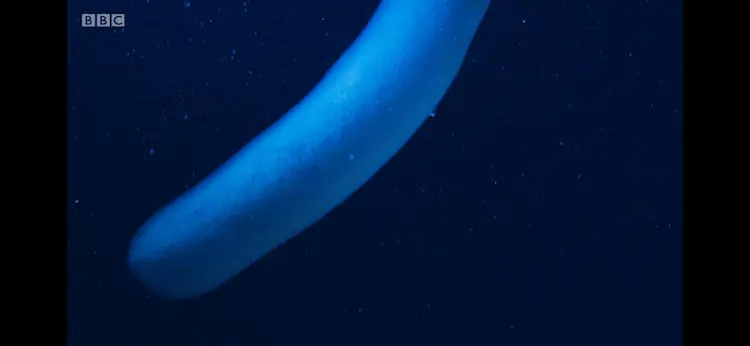
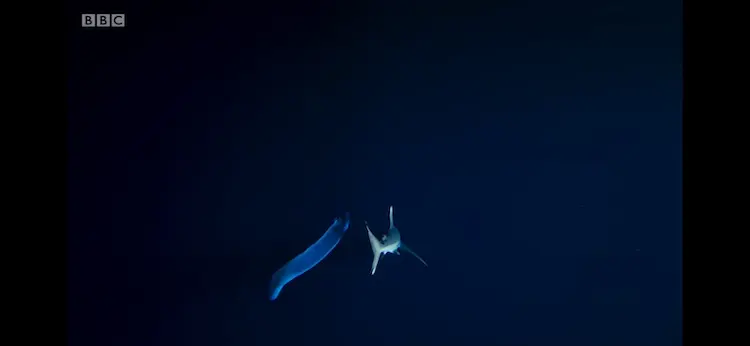
Australia
The only visually-similar species that gets this large is Pyrostremma spinosum [1].
[Link 1]
[Link 1]
1
Oceanic whitetip shark
Carcharhinus longimanus
CR

Australia
2
Swordfish
Xiphias gladius
LC
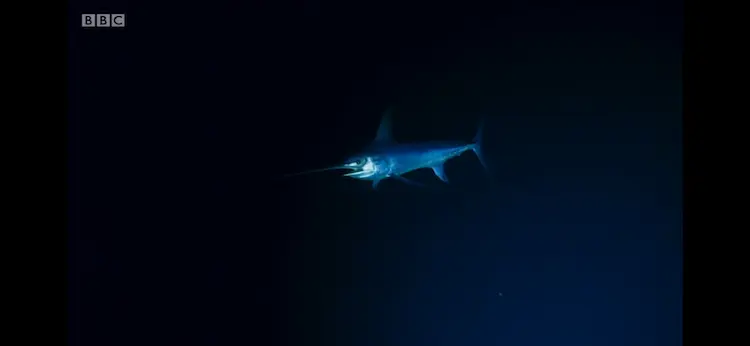
Galápagos, Ecuador
2
Strawberry squid
Histioteuthis heteropsis
NE
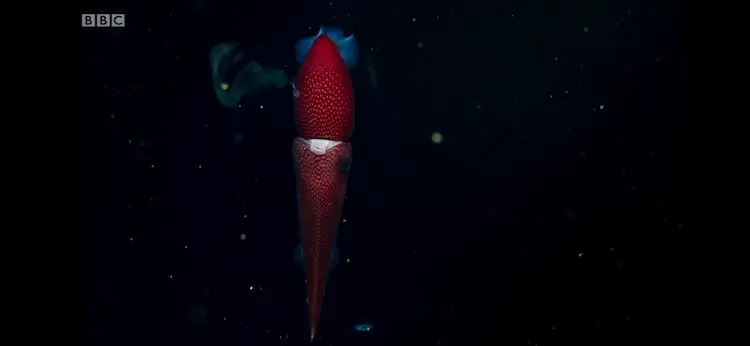
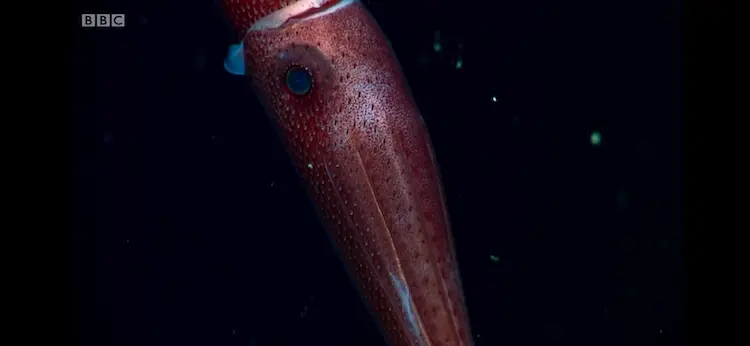
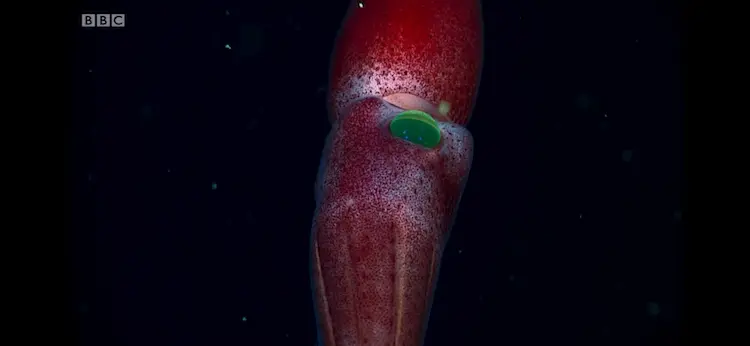
Monterey Canyon, California, USA
The footage shown is taken from the Monterey Bay Aquarium Research Institute's (MBARI) expeditions in the Monterey Submarine Canyon as shown in their Youtube channel video from 2017 [1]. This footage supported research into the species by MBARI alumnus Kate Thomas; her 2017 paper "Two eyes for two purposes: In situ evidence for asymmetric vision in the cockeyed squids Histioteuthis heteropsis and Stigmatoteuthis dofleini" [2] corroborates the location as being from the Monterey Canyon.
[Link 1] [Link 2]
[Link 1] [Link 2]
2
Barreleye fish
Macropinna microstoma
NE
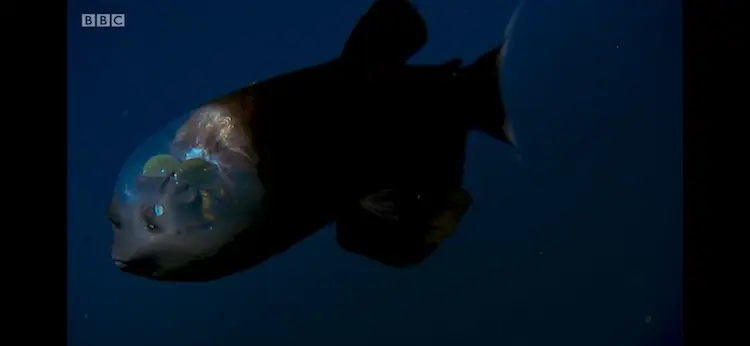
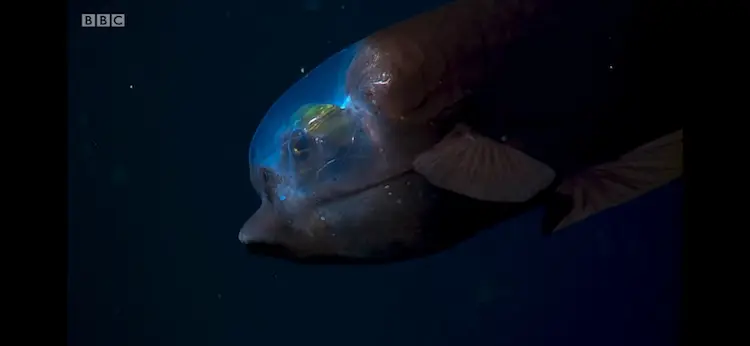
Atlantic Coast, USA
3
Lanternfish sp.
- ?
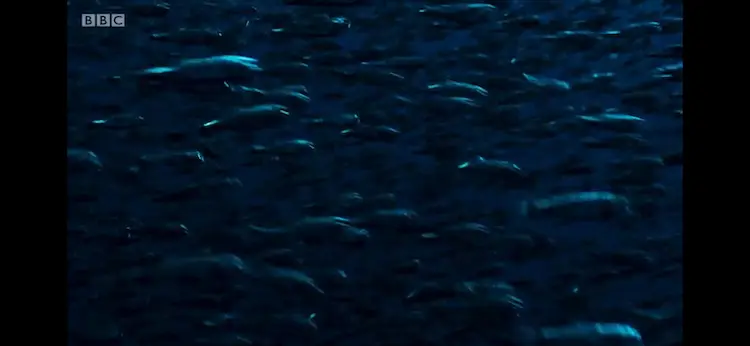
Chile
3
Humboldt squid
Dosidicus gigas
DD
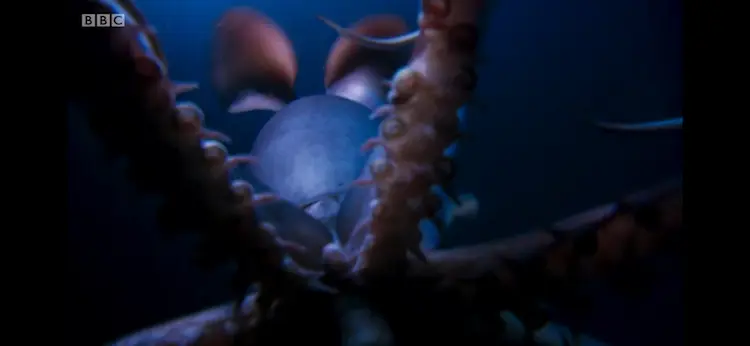
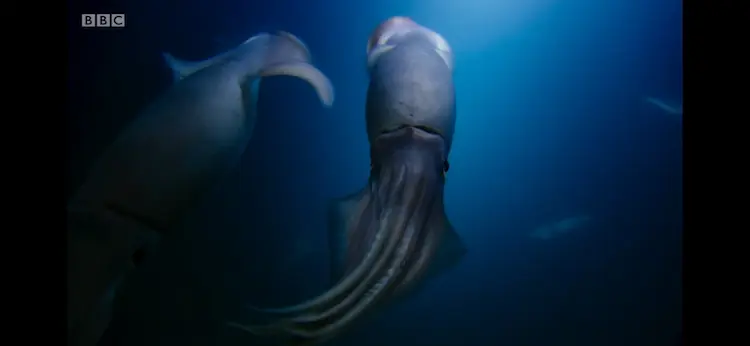
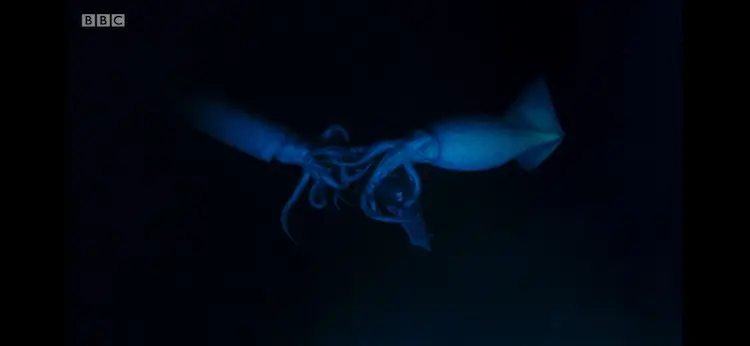
Chile
4
Common fangtooth
Anoplogaster cornuta
LC
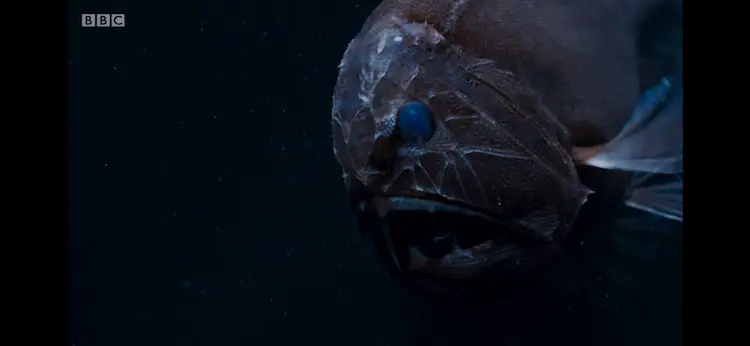
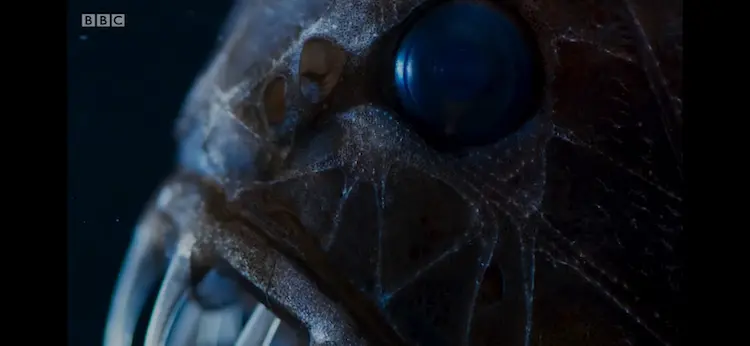
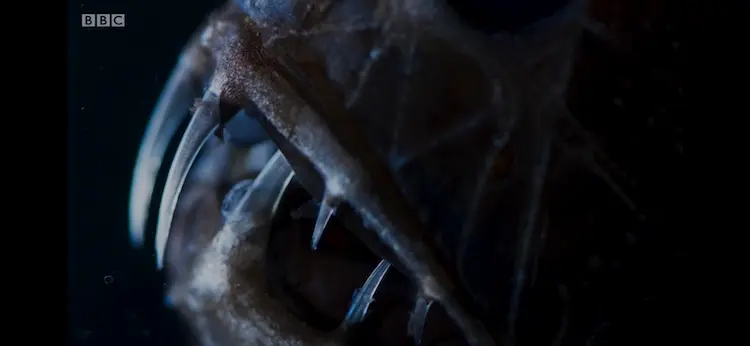
Atlantic Coast, USA
5
Giant siphonophore
Praya dubia
NE
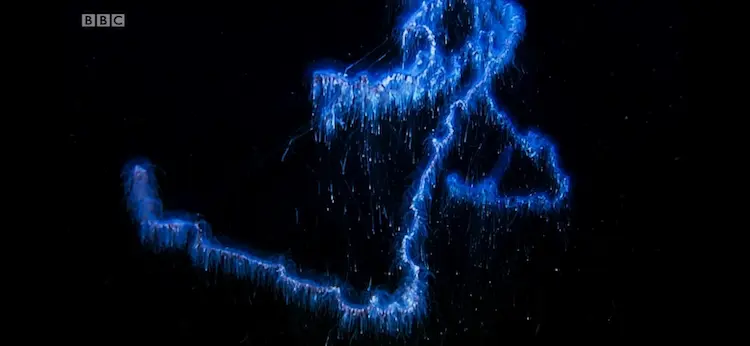
Atlantic Coast, USA
Narration mentions this animal can get as large as a Blue Whale, which is consistent with this species
5
Dinner plate jellyfish sp.
[genus Solmissus]
?
![Dinner plate jellyfish sp. ([genus Solmissus]) as shown in Blue Planet II - The Deep](Blue Planet II/The Deep - 5 Nov 2017/Screenshot_2023-04-20-09-48-59-40_ea674942d521217280f241a1f6284269.webp)
According to Wikipedia, "they are found in the deep waters of Monterey Bay, California."
5
Pelagic sea cucumber
Pelagothuria natatrix
NE
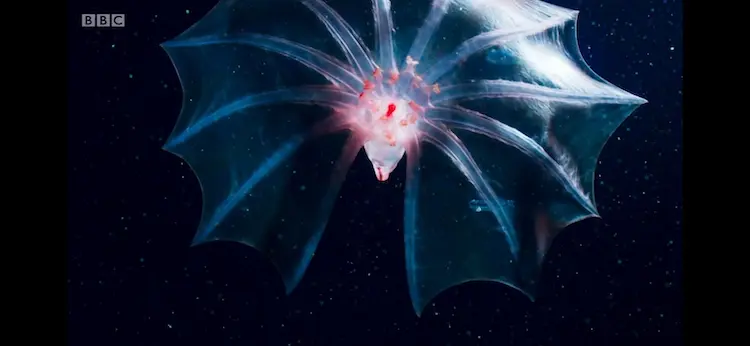
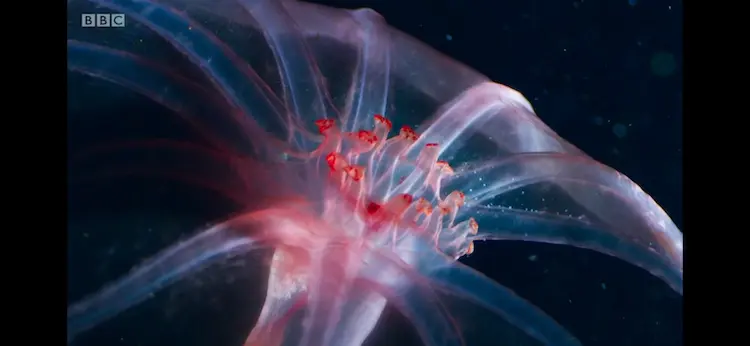
Atlantic Coast, USA
5
Sea toad sp.
[genus Chaunax]
?
![Sea toad sp. ([genus Chaunax]) as shown in Blue Planet II - The Deep](Blue Planet II/The Deep - 5 Nov 2017/Screenshot_2023-04-20-09-51-45-32_ea674942d521217280f241a1f6284269.webp)
![Sea toad sp. ([genus Chaunax]) as shown in Blue Planet II - The Deep](Blue Planet II/The Deep - 5 Nov 2017/Screenshot_2023-04-20-09-51-11-80_ea674942d521217280f241a1f6284269.webp)
![Sea toad sp. ([genus Chaunax]) as shown in Blue Planet II - The Deep](Blue Planet II/The Deep - 5 Nov 2017/Screenshot_2023-04-20-09-52-43-32_ea674942d521217280f241a1f6284269.webp)
Pacific Coast, USA
5
Flapjack octopus
Opisthoteuthis californiana
DD
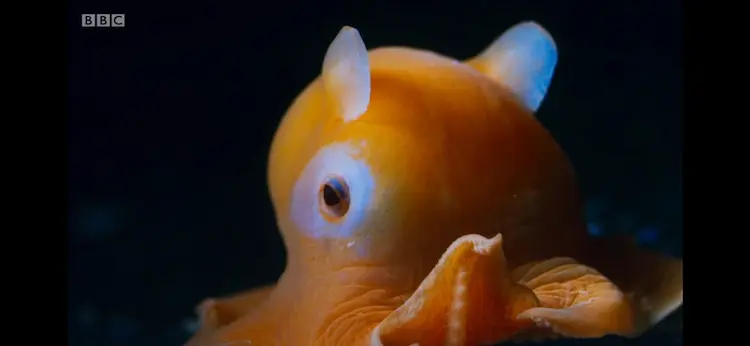
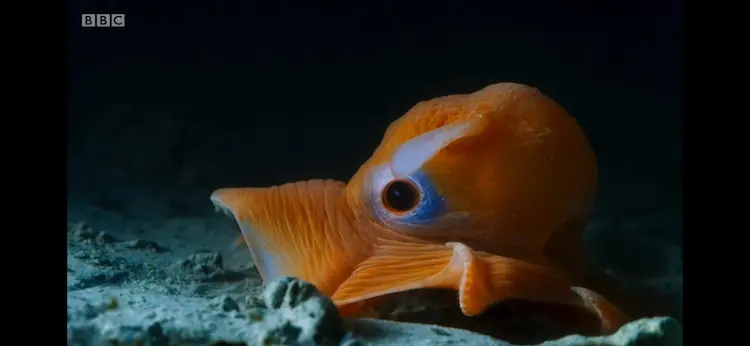
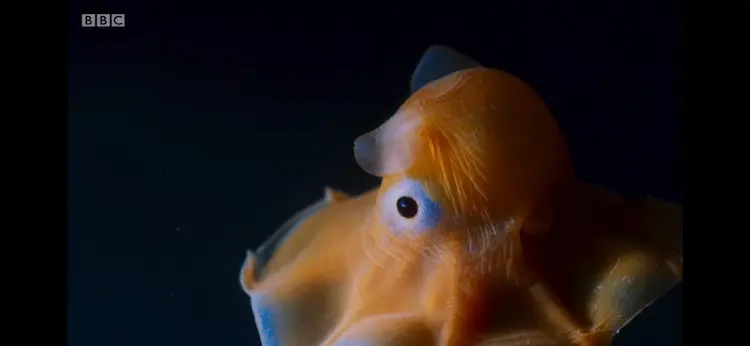
Atlantic Coast, USA
6
Bluntnose sixgill shark
Hexanchus griseus
NT
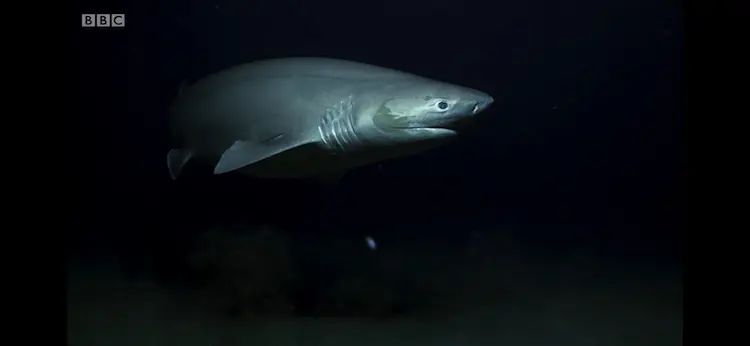
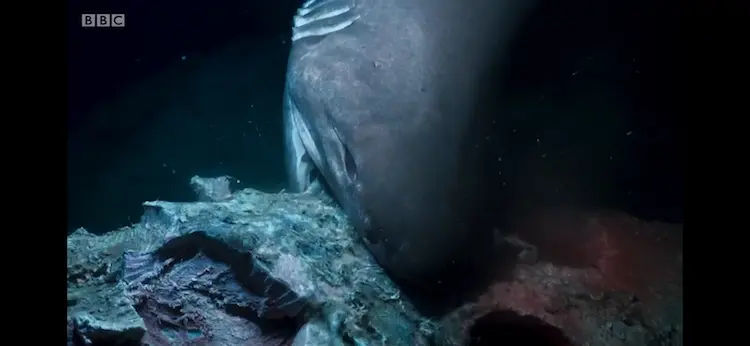
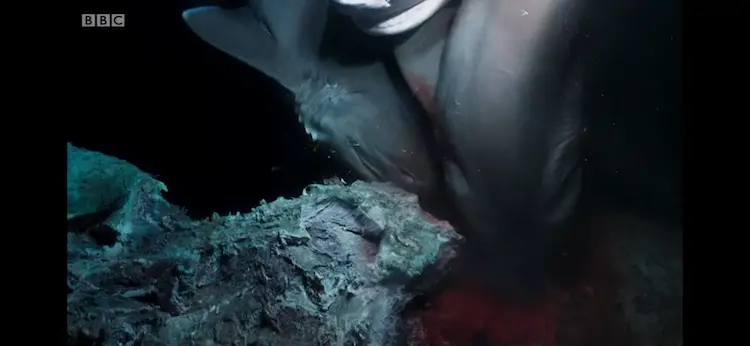
6
Carrier crab
Paromola cuvieri
NE
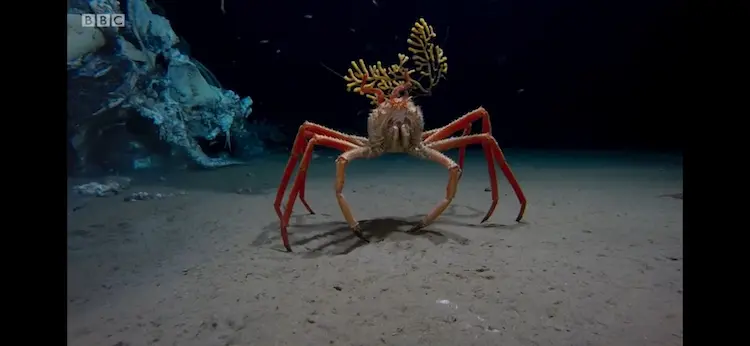
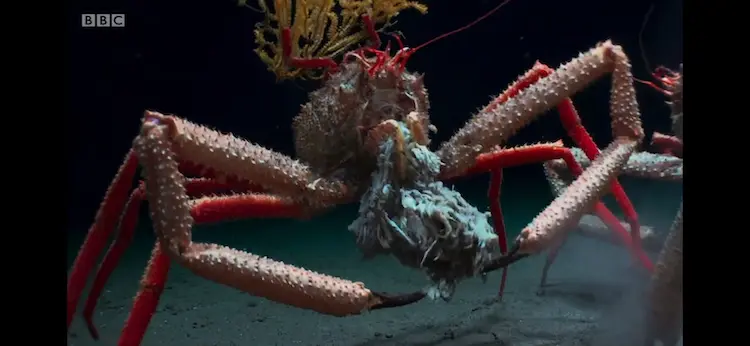
The Azores, Portugal
6
Toothed rock crab
Cancer bellianus
NE
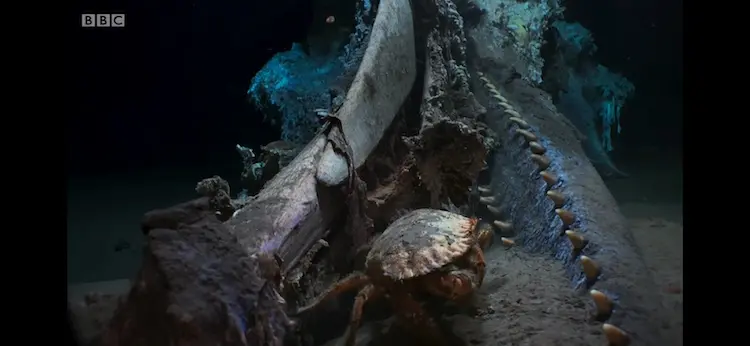
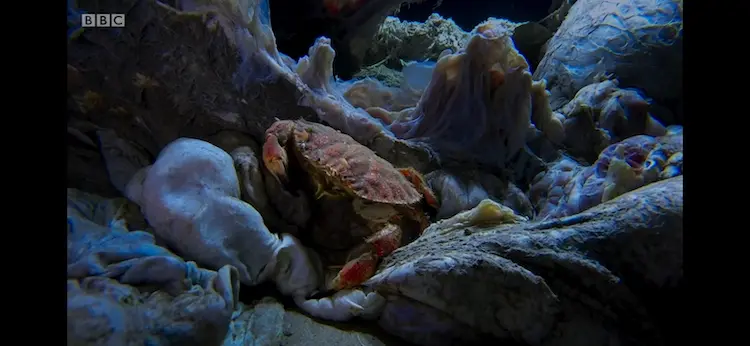
The Azores, Portugal
6
Silver scabbardfish
Lepidopus caudatus
DD
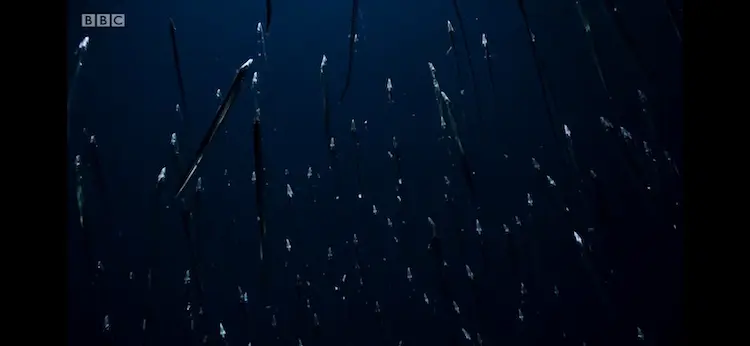
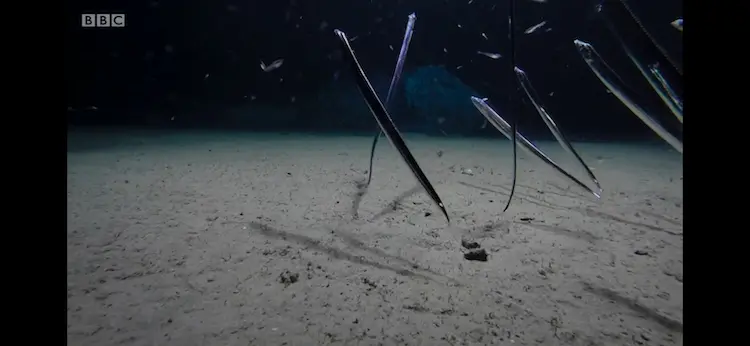
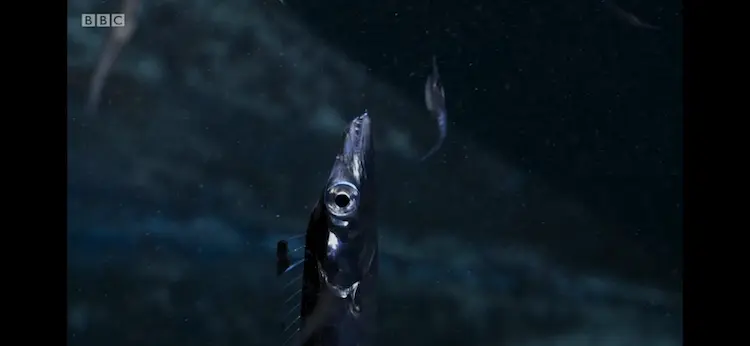
The Azores, Portugal
6
Zombie worm sp.
[genus Osedax]
?
![Zombie worm sp. ([genus Osedax]) as shown in Blue Planet II - The Deep](Blue Planet II/The Deep - 5 Nov 2017/Screenshot_2023-04-20-15-06-59-84_ea674942d521217280f241a1f6284269.webp)
![Zombie worm sp. ([genus Osedax]) as shown in Blue Planet II - The Deep](Blue Planet II/The Deep - 5 Nov 2017/Screenshot_2023-04-20-15-07-11-06_ea674942d521217280f241a1f6284269.webp)
The Azores, Portugal
7
Venus' flower basket
Euplectella aspergillum
NE
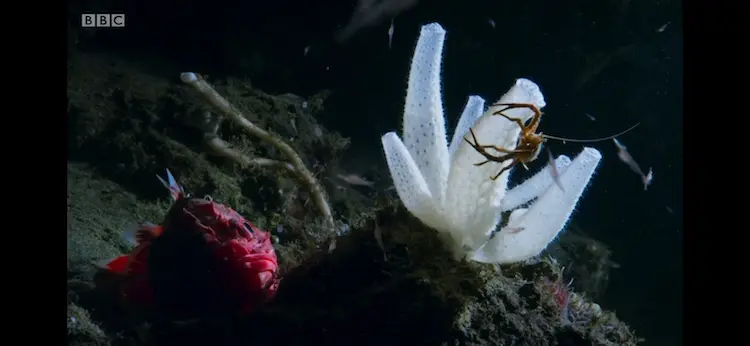
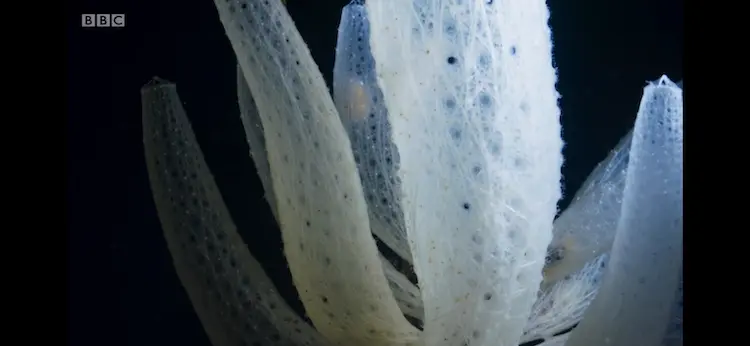
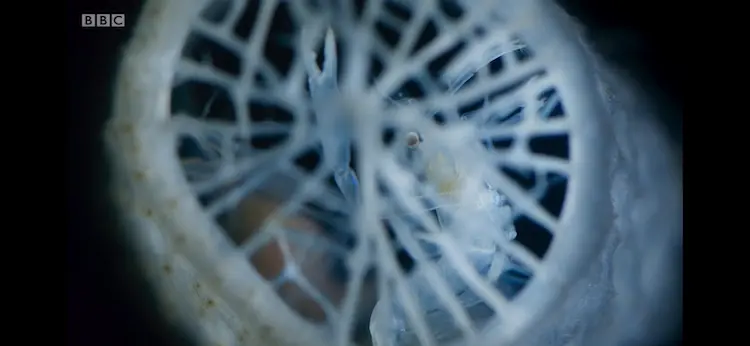
Galápagos, Ecuador
<-- consider removing as it is a sponge, similar to a coral, which I don't include
7
Glass sponge shrimp sp.
- ?
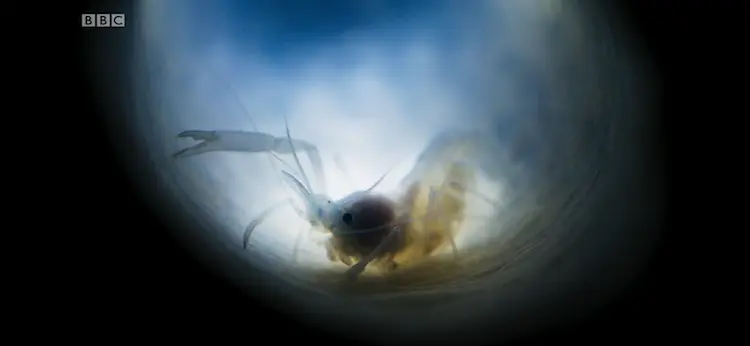
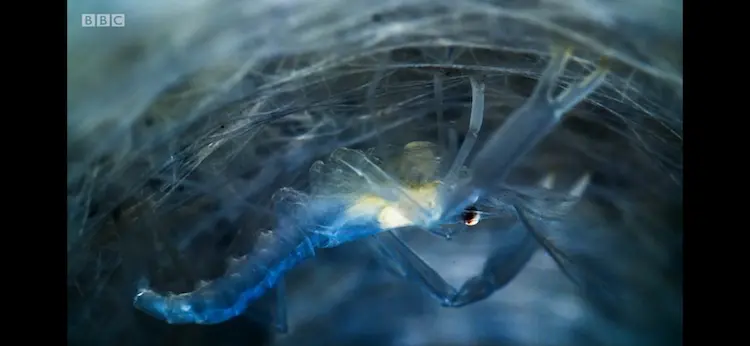
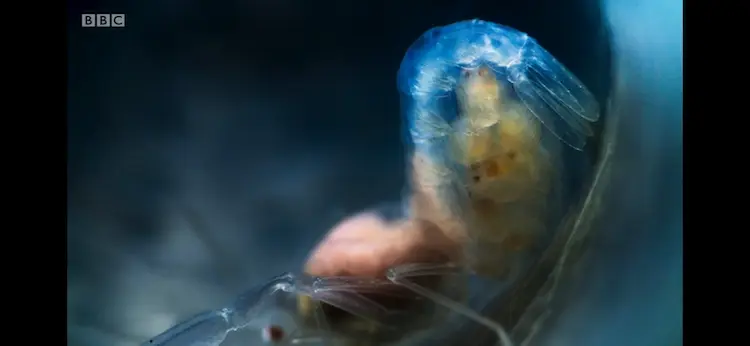
Galápagos, Ecuador
"We did an awful lot of research: I have about 250 deep-ocean scientists in my inbox on a regular basis. In my first few weeks, Alex Rogers at Oxford told me about the shrimp and the sponge. I thought: Oh my god, it's a love story in the deep ocean. We cannot leave the Galapagos without finding the Venus's [flower] basket sponge." [1]
[Link 1]
[Link 1]
8
Giant seep mussel
Bathymodiolus childressi
NE
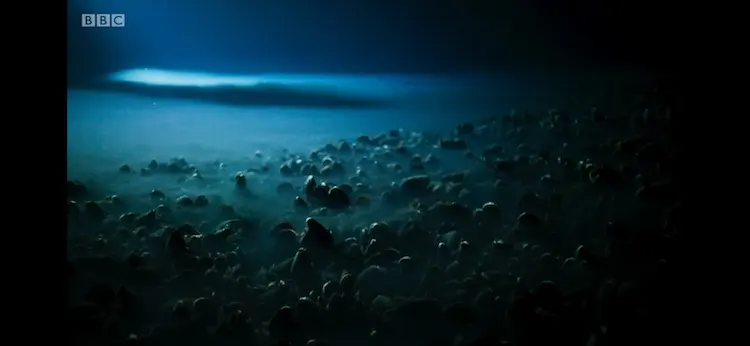
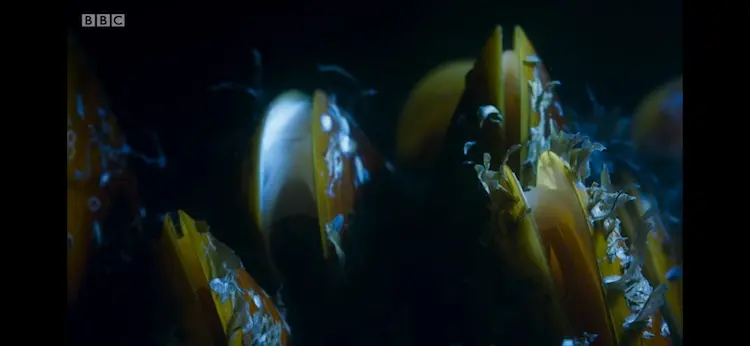
GC233 Brine Pool NR1, Gulf of Mexico, USA
Dr. Samantha Joye, the lead expedition scientist, has extensively studied brine pools in the Gulf of Mexico. In "The Gulf of Mexico: An Introductory Survey of a Seep-Dominated Seafloor Landscape (2020)" [1], she and her co-author outline the locations of several brine pools, including the pool GC233 NR1 at a depth of 650m. This is where the Blue Planet II team filmed this sequence, as corroborated by a blog post by researches at Arellano Larval Lab at Western Washington Universitys Shannon Point Marine Center [2], and accompanying video [3]. The species of seep mussel found on the edges of the pool here is widely documented as being Bathymodiolus childressi.
[Link 1] [Link 2] [Link 3]
[Link 1] [Link 2] [Link 3]
8
Caridean shrimp
Alvinocaris stactophila
NE
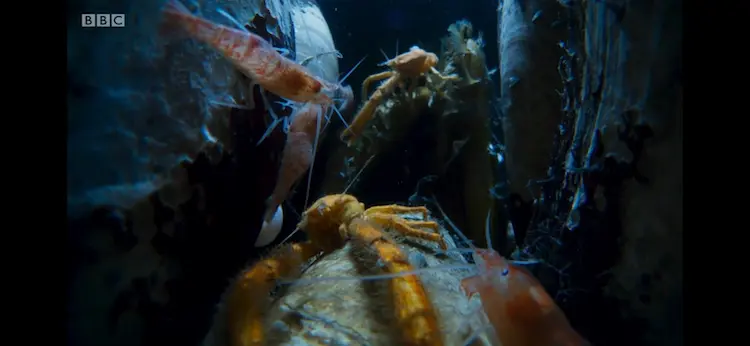
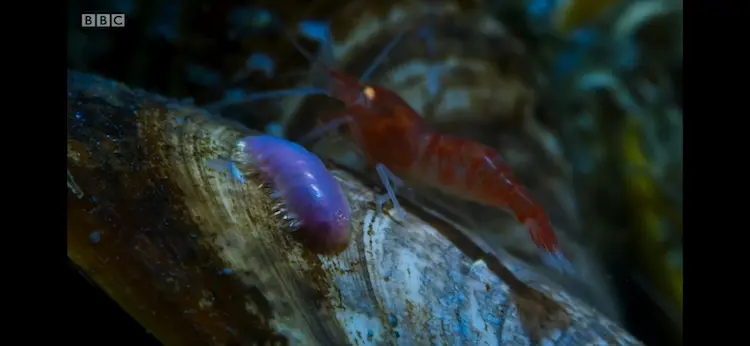
GC233 Brine Pool NR1, Gulf of Mexico, USA
The shrimp species found at this brine pool is Alvinocaris stactophila, according to the paper "Seasonality and zonation in the reproductive biology and population structure of the shrimp Alvinocaris stactophila (Caridea: Alvinocarididae) at a Louisiana Slope cold seep (2006)" [1]: "Brine Pool NR1 is located at 27°43.4N, 91° 16.5 W on the Louisiana Slope at a depth of 650m (MacDonald et al. 1990b)... Bubbles of methane issue from the centre of the pool. The brine pool is surrounded by a bed of mussels Bathymodiolus childressi that varies from 3 to 7 m in width and covers an area of ~540 m2 (MacDonald et al. 1990b). In addition to mussels, the brine pool seep community includes orbiniid polychaetes, neritid gastropods, gala-theid crabs and the caridean shrimp Alvinocaris stactophila (MacDonald et al. 1990a)."
[Link 1]
[Link 1]
8
Squat lobster sp.
[genus Munidopsis]
?
![Squat lobster sp. ([genus Munidopsis]) as shown in Blue Planet II - The Deep](Blue Planet II/The Deep - 5 Nov 2017/Screenshot_2023-04-20-17-15-03-96_ea674942d521217280f241a1f6284269.webp)
![Squat lobster sp. ([genus Munidopsis]) as shown in Blue Planet II - The Deep](Blue Planet II/The Deep - 5 Nov 2017/Screenshot_2023-04-20-17-15-09-73_ea674942d521217280f241a1f6284269.webp)
GC233 Brine Pool NR1, Gulf of Mexico, USA
The paper "Chemoautotrophic Production Incorporated by Heterotrophs in Gulf of Mexico Hydrocarbon Seeps: An Examination of Mobile Benthic Predators and Seep Residents (2008)" [1] gives a good overview of the fauna of the GC233 brine pool. None of the papers I've come across have narrowed down the species of squat lobster present beyond the genus Munidopsis.
[Link 1]
[Link 1]
8
Cutthroat eel sp.
[genus Synaphobranchus]
?
![Cutthroat eel sp. ([genus Synaphobranchus]) as shown in Blue Planet II - The Deep](Blue Planet II/The Deep - 5 Nov 2017/Screenshot_2023-04-20-17-17-18-46_ea674942d521217280f241a1f6284269.webp)
![Cutthroat eel sp. ([genus Synaphobranchus]) as shown in Blue Planet II - The Deep](Blue Planet II/The Deep - 5 Nov 2017/Screenshot_2023-04-20-17-15-55-60_ea674942d521217280f241a1f6284269.webp)
![Cutthroat eel sp. ([genus Synaphobranchus]) as shown in Blue Planet II - The Deep](Blue Planet II/The Deep - 5 Nov 2017/Screenshot_2023-04-20-17-16-47-00_ea674942d521217280f241a1f6284269.webp)
GC233 Brine Pool NR1, Gulf of Mexico, USA
The paper "Chemoautotrophic Production Incorporated by Heterotrophs in Gulf of Mexico Hydrocarbon Seeps: An Examination of Mobile Benthic Predators and Seep Residents (2008)" [1] gives a good overview of the fauna of the GC233 brine pool. None of the papers I've come across have narrowed down the species of cutthroat eel present beyond the genus Synaphobranchus.
[Link 1]
[Link 1]
9
Sea slug sp.
- ?
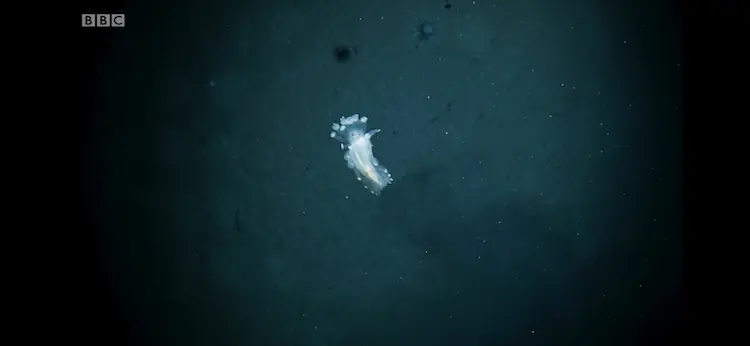
9
Sea star sp.
[genus Hymenaster]
?
![Sea star sp. ([genus Hymenaster]) as shown in Blue Planet II - The Deep](Blue Planet II/The Deep - 5 Nov 2017/Screenshot_20230123-115020.webp)
9
Ethereal snailfish
[undescribed]
NE
![Ethereal snailfish ([undescribed]) as shown in Blue Planet II - The Deep](Blue Planet II/The Deep - 5 Nov 2017/Screenshot_2023-04-21-11-42-20-22_ea674942d521217280f241a1f6284269.webp)
![Ethereal snailfish ([undescribed]) as shown in Blue Planet II - The Deep](Blue Planet II/The Deep - 5 Nov 2017/Screenshot_2023-04-20-17-21-16-51_ea674942d521217280f241a1f6284269.webp)
Mariana Trench,
The paper "Fishes of the hadal zone including new species, in situ observations and depth records of Liparidae (2016)" [1] details the expedition that discovered the ethereal snailfish: "The second new species was an unexpected, solitary snailfish observed as deep as 8145 m over two deployments in the Mariana Trench."
[Link 1]
[Link 1]
10
Hoff crab
Kiwa tyleri
NE
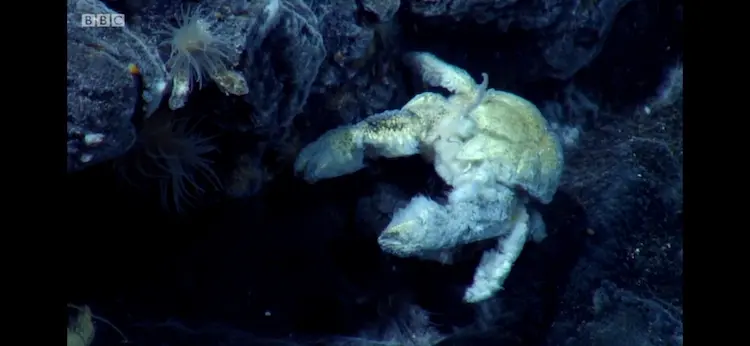
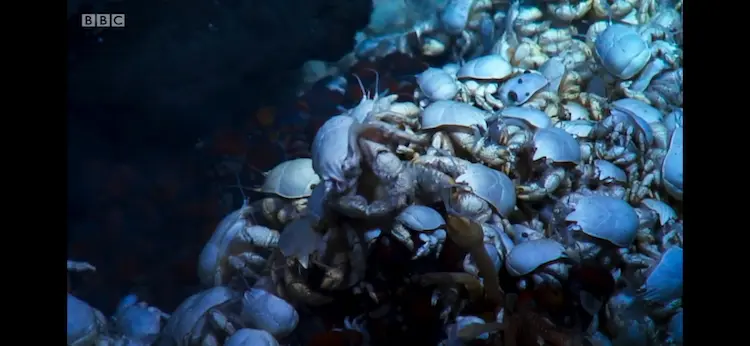
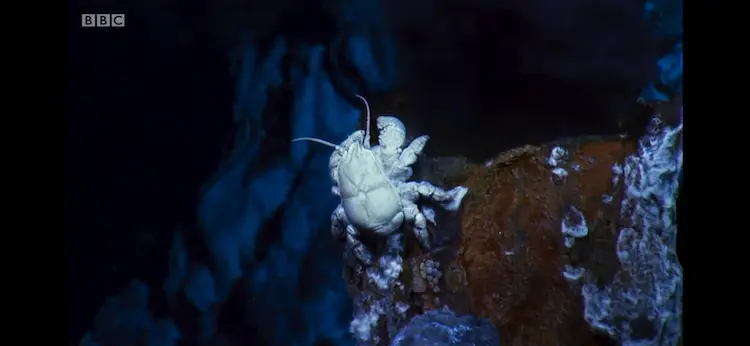
East Scotia Ridge,
"We visited a series of sites over the next 6 weeks along the East Scotia Ridge. ... This brings me back to those hydrothermal vent crabs in The Deep episode of Blue Plant II. The crabs live in areas where hot water pores over them which provides the conditions for the bacteria to grow. We collected the samples from the vents using a suction sampler on the ROV Isis. I then looked at the biochemical composition of the crabs and the bacteria. They were very similar. This indicated that the bacteria living on those crabs were its food source... Watching Blue Planet II the other weekend gave me a huge amount of personal pride. To sit there with my kids and my partner and show them on TV the Antarctic crab that I helped discover felt like a massive landmark in my scientific career. I was even there at the moment when the crab stuck its claw into the hot water." Source: https://blogs.ncl.ac.uk/stem/tag/inspiration/
[Link 1] [Link 2]
[Link 1] [Link 2]
10
Vent shrimp
Rimicaris exoculata
NE
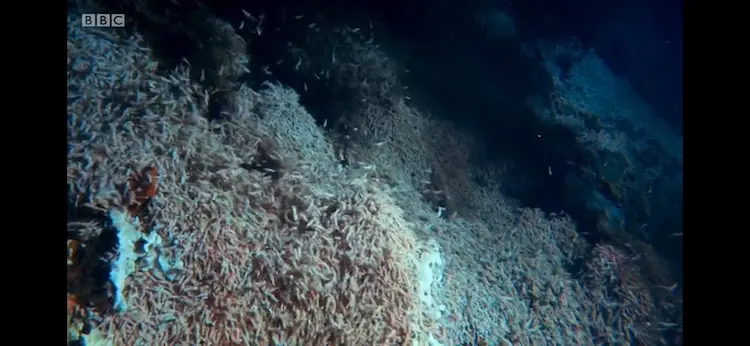
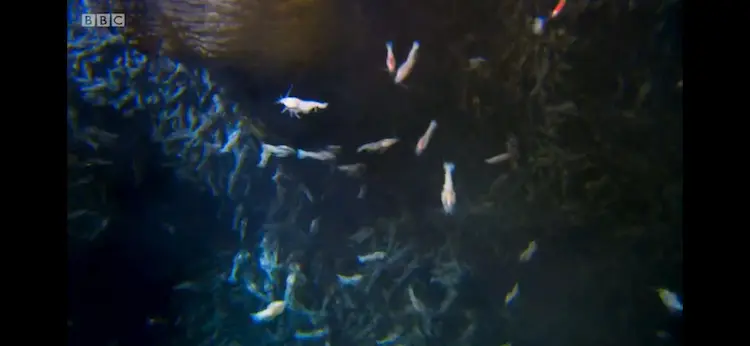
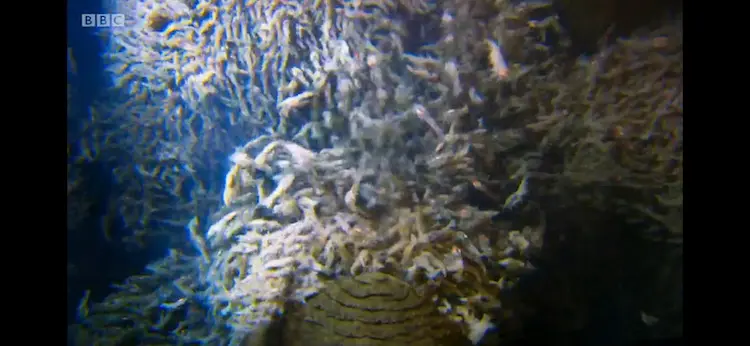
Visual ID - lack eye stalks, has a clear, shiny 'V' on the body which is visible in the sequence
[Link 1]
[Link 1]
![Sea pig sp. ([genus Scotoplanes]) as shown in Blue Planet II - The Deep](Blue Planet II/The Deep - 5 Nov 2017/Screenshot_2023-04-20-17-19-59-38_ea674942d521217280f241a1f6284269.webp)